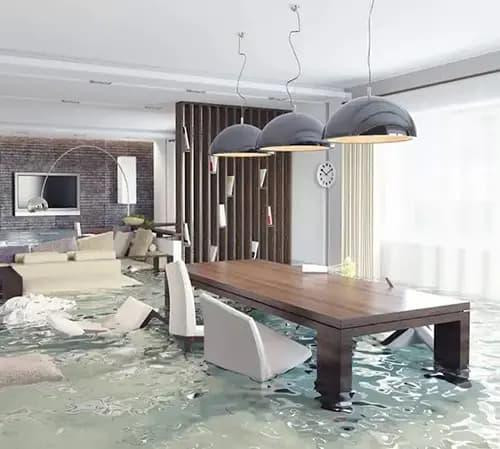A basement flood can happen suddenly and leave homeowners feeling overwhelmed. Whether it’s caused by heavy rain, a burst pipe, or poor drainage, water in your basement is more than an inconvenience—it can be dangerous. Quick action is essential to limit flood damage, protect your health, and restore your property. If you are facing a home flood emergency, here are the most important steps to take immediately after a basement flood.
1. Ensure Safety First
Before entering a flooded basement, think about safety. Standing water may hide electrical hazards, sharp objects, or contaminated materials. Shut off electricity and gas in the affected area if you can do so safely. If you suspect electrical appliances or wiring are submerged, do not attempt to touch them until a professional has confirmed it is safe.
Contaminated water is another concern. If the floodwater comes from a sewer backup or storm runoff, it could contain bacteria and harmful chemicals. Always wear rubber boots, gloves, and protective gear before entering the area.

2. Identify the Source of the Water
Finding the source of the flood is critical. Is it a broken pipe, heavy rainfall seeping through cracks, or a sewage backup? If it’s an internal plumbing issue, shut off your home’s main water valve immediately. For external causes like rain or groundwater, try to redirect the flow away from your foundation. Calling a professional for emergency leak repair can prevent further damage and keep the situation from worsening.
3. Document the Flood Damage
As tempting as it may be to start cleaning right away, you should first document the flood damage for insurance purposes. Take photos and videos of all affected areas, including furniture, appliances, flooring, and walls. This evidence will be helpful when filing a claim with your insurance provider.
4. Begin Water Removal Quickly
The longer water sits in your basement, the more severe the damage will be. Mold can start growing within 24 to 48 hours after a home flood emergency. Use pumps, wet vacuums, or buckets to remove standing water. If the flood level is high, you may need to contact a professional restoration service such as Ideal Response, which has specialized equipment to remove large volumes of water efficiently.
5. Dry and Dehumidify the Area
Once the water is out, drying is the next urgent step. Open windows and doors to improve ventilation if weather conditions allow. Use fans, dehumidifiers, and heaters to accelerate the drying process. Pay close attention to walls, carpeting, and wooden structures, as moisture trapped in these materials can cause long-term structural damage and mold growth.

6. Clean and Disinfect Thoroughly
Even clean-looking water can leave behind harmful bacteria and residue. All surfaces, including floors, walls, and furniture, should be scrubbed and disinfected. Porous materials such as carpets, insulation, and drywall may need to be discarded if they remain saturated. A professional restoration company like Ideal Response has the training and tools to ensure proper sanitation after a basement flood.
7. Check for Structural and Electrical Issues
After cleanup, inspect your basement for hidden problems. Flooding can weaken foundations, warp wooden beams, and damage electrical systems. Do not attempt to restore electricity until a licensed electrician has inspected the area. A professional contractor can also evaluate structural integrity and recommend repairs if needed.
8. Prevent Future Basement Flooding
Once the immediate crisis is handled, take preventive measures to protect your home from another basement flood. Some effective steps include:
- Installing a sump pump with battery backup.
- Sealing foundation cracks.
- Maintaining gutters and downspouts.
- Installing a backwater valve to prevent sewage backup.
- Scheduling regular inspections for plumbing leaks.
These preventive actions can save you from future emergency leak repair and costly repairs.
Final Thoughts
Dealing with a home flood emergency is stressful, but taking the right steps quickly can minimize damage and protect your property. Always prioritize safety, remove water promptly, and thoroughly disinfect the area. For extensive flood damage, don’t hesitate to call professionals who can handle the cleanup and restoration process effectively. With proper response and prevention, you can safeguard your home and reduce the risk of future flooding.





Comments